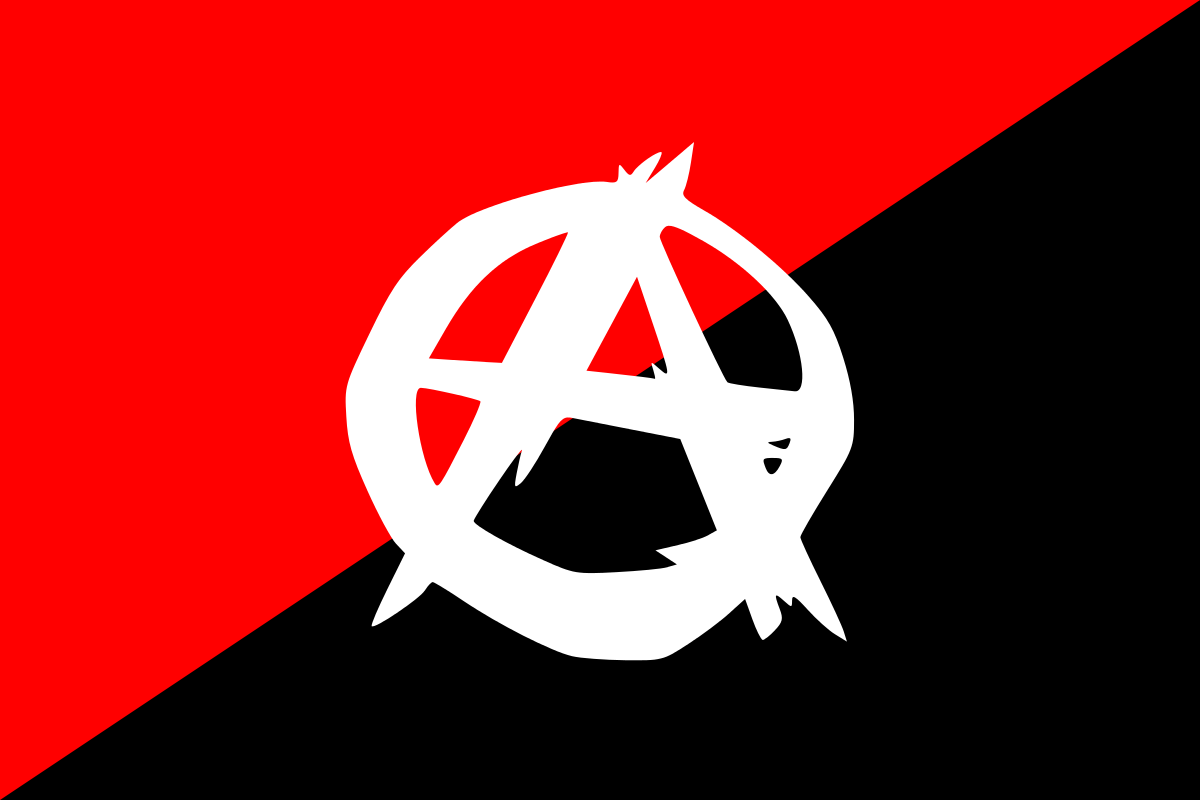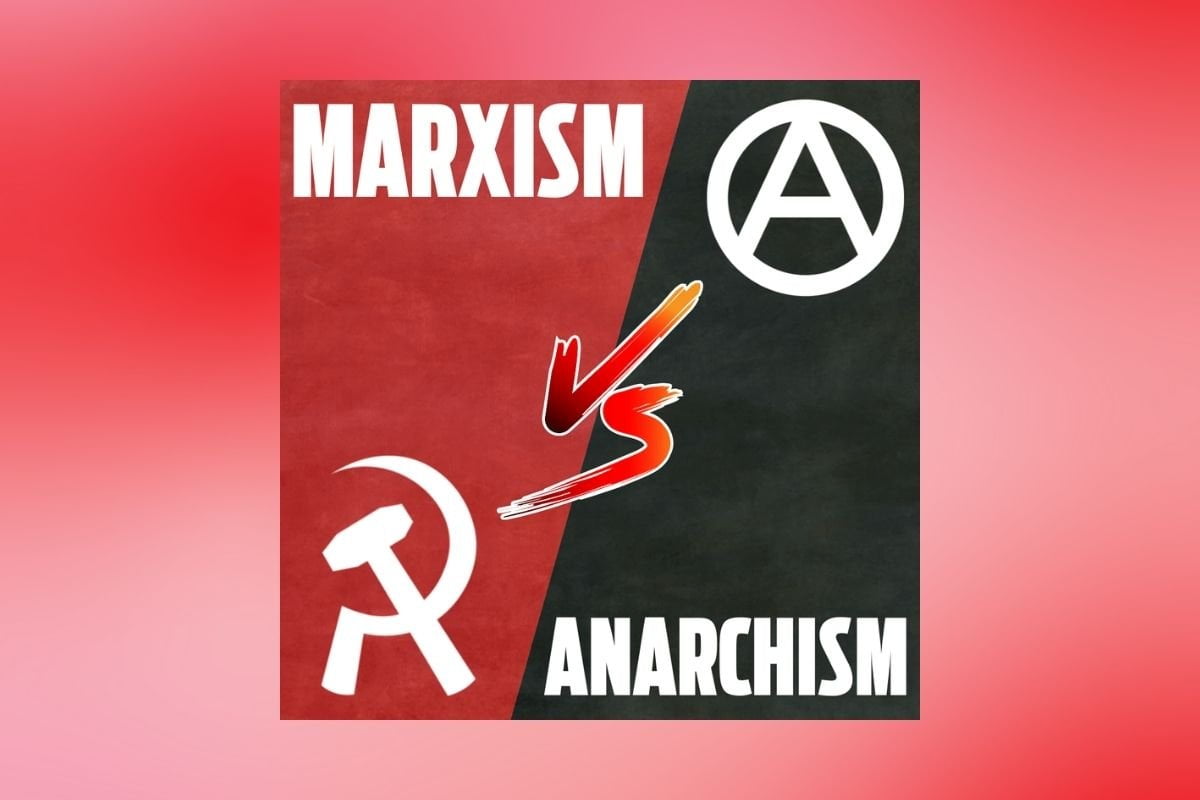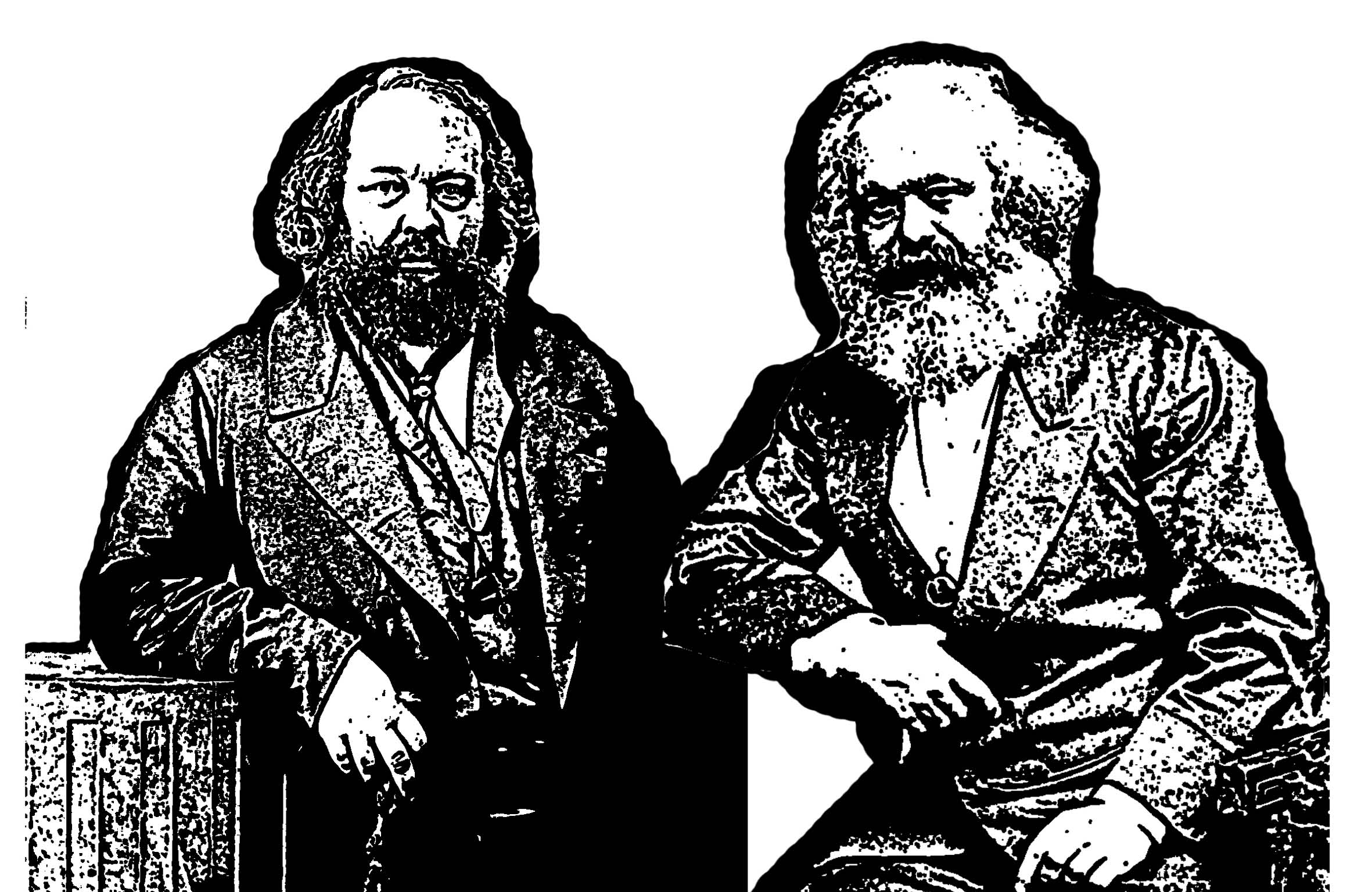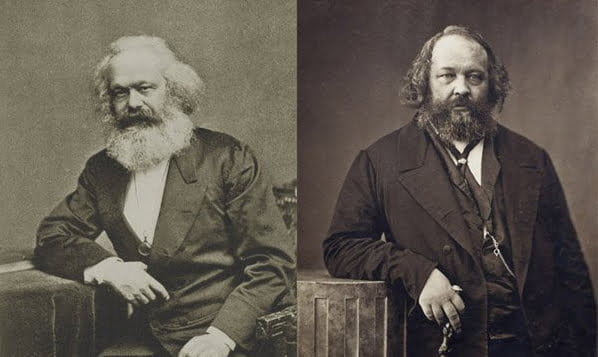We publish here the fourth part in a series by Alan Woods looking at the theoretical differences between Marxism and anarchism. These articles were originally published as an open letter in response to an article by ‘Black Flag’, an anarchist group in Brazil, continuing the analysis presented in this earlier series on the ideas of Marxism vs anarchism.
In this fourth and final part, Alan discusses the question of revolutionary violence and looks at the inspiring example of the Russian Revolution as historical proof of the need for a workers’ state.
Read parts one, two, and three.
The “dictatorship of the proletariat”
In describing the transitional state between capitalism and socialism Marx spoke of the “dictatorship of the proletariat.” This term has led to a serious misunderstanding. Nowadays, the word dictatorship has connotations that were unknown to Marx. In an age that has known the horrific crimes of Hitler and Stalin, it conjures up nightmarish visions of a totalitarian monster, concentration camps and secret police. But such things did not yet exist even in the imagination in Marx’s day. For him the word dictatorship came from the Roman Republic, and referred to wartime emergencies in which the normal rules were temporarily set aside.
The Roman dictator (“one who dictates”), was an extraordinary magistrate (magistratus extraordinarius) with the absolute authority to perform tasks beyond the normal authority of a magistrate. The office was originally named Magister Populi (Master of the People), that is to say, Master of the Citizen Army. In other words, it was a military role which almost always involved leading an army in the field. Once the appointed period ended, the dictator would step down. The idea of a totalitarian dictatorship like Stalin’s Russia, where the state would oppress the working class in the interests of a privileged caste of bureaucrats, would have horrified Marx.
In reality Marx’s “dictatorship of the proletariat” is merely another term for the political rule of the working class or a workers’ democracy. Marx based his idea of the dictatorship of the proletariat on the Paris Commune of 1871. The Commune was a glorious episode in the history of the world working class. Here, for the first time, the popular masses, with the workers at their head, overthrew the old state and at least began the task of transforming society.
Marx and Engels drew a thorough balance sheet of the Commune, pointing out its advances as well as its errors and deficiencies. These can almost all be traced to the failings of the leadership. It is true, as Black Flag states, that the supporters of Marx in the Commune were a small minority. The leaders of the Commune were a mixed bunch, ranging from a minority of Marxists to elements that stood closer to reformism or anarchism.
One of the reasons the Commune failed was that it did not launch a revolutionary offensive against the reactionary government that had installed itself at Versailles. This gave time to the counterrevolutionary forces to rally and attack Paris.
With no clearly-defined plan of action, leadership or organization, the masses displayed an astonishing degree of courage, initiative and creativity. Yet in the last analysis, the lack of a bold and far-sighted leadership and a clear programme led to a terrible defeat. Over 30,000 people were butchered by the counter-revolution. The Commune was literally buried under a mound of corpses.
Violence and socialism
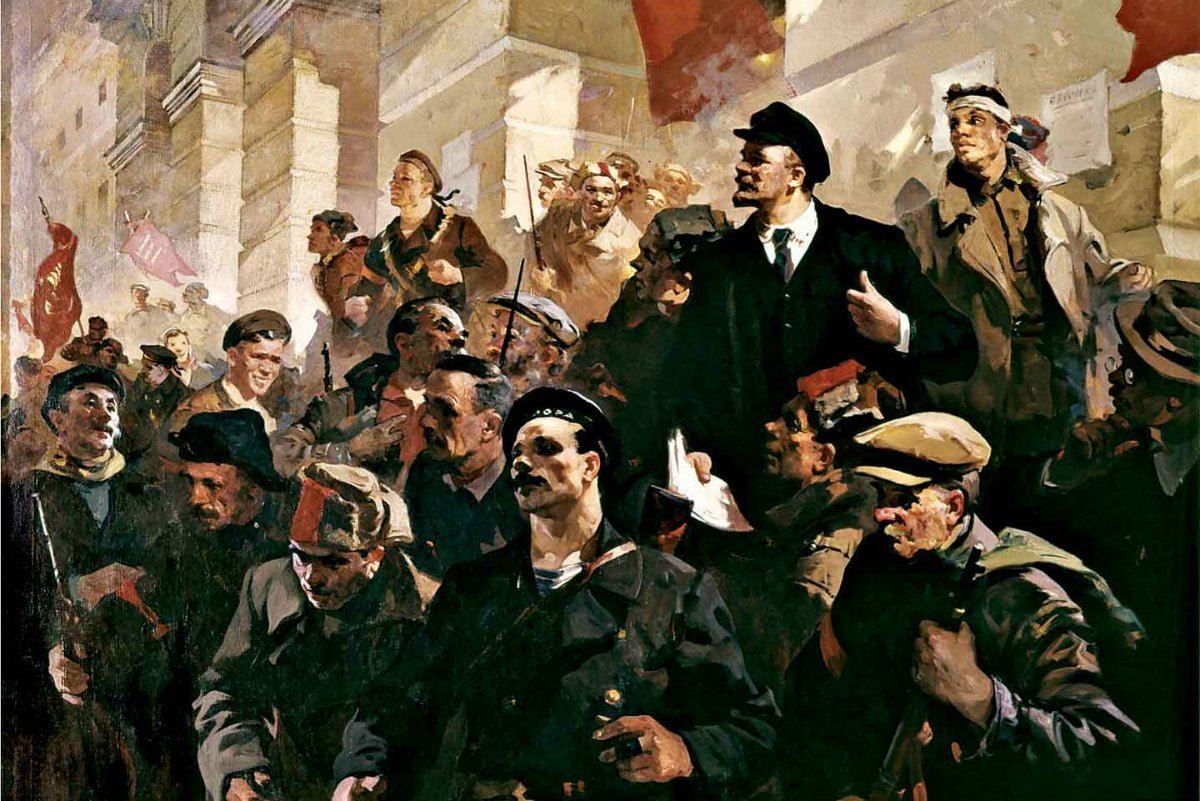 What is the anarchist position on the question of revolutionary violence? Here again our friend tries to confuse the issue by telling us something that we already knew: that there are as many theories of anarchism as there are people claiming to be anarchists.
What is the anarchist position on the question of revolutionary violence? Here again our friend tries to confuse the issue by telling us something that we already knew: that there are as many theories of anarchism as there are people claiming to be anarchists.
“Throughout history, in fact, there were some insurrectionary anarchists who defended the use of terrorism as a means of social transformation. But they were always minority. Most libertarian forces dedicated themselves to building of broad mass movements, such as Syndicalism, and to strengthen it until the conditions to trigger a revolution. The use of violence as a revolutionary tool for social transformation has never been denied.”
So where do we stand then? Are anarchists in favour of a revolutionary violence or are they not? We are as wise now as what we were to start with. But one thing is crystal clear, and it was already stated by Bakunin: the working class must not take power, because if it does so it will invariably fall into the trap of “authoritarianism”:
“Let us ask, if the proletariat is to be the ruling class, over whom is it to rule? In short, there will remain another proletariat which will be subdued to this new rule, to this new state. For instance, the peasant “rabble” who, as it is known, does not enjoy the sympathy of the Marxists who consider it to represent a lower level of culture, will probably be ruled by the factory proletariat of the cities. Or, if this problem is to be approached nationalistically, the Slavs will be placed in the same subordinate relationship to the victorious German proletariat in which the latter now stands to the German bourgeoisie.” (Statism and Anarchy, Bakunin, 1873)
Now it stands to reason that when the working class takes power, it will be impossible for each and every worker to exercise that power directly. This, however, does not present insurmountable problem, on one condition: that we accept the principle of democratic elections, in which the minority accepts the decisions of the majority. Admittedly, this democratic principle is far from perfect. But it is the best solution that has been historically evolved, and nobody so far, and least of all Bakunin and his supporters, have ever proposed any better solution.
Black Flag urges us to “seek the institutionalization of a face-to-face direct democracy.” It would be useful if he would write in plain English (or Portuguese) for a change, so that we ordinary mortals might understand what is being said. What does this wonderful “face-to-face direct democracy” consist of? Presumably, it means that individuals must talk to each other.
We have nothing whatsoever against this idea, which has actually been around for quite a long time. But having exercised “face-to-face direct democracy” for a reasonable space of time, how does one then resolve differences of opinion? Sadly, we have no alternative but to raise our hands for or against. And the majority must decide.
By the same token, since everyone cannot directly participate in governing society, in the end we are obliged to elect people we trust to represent our interests. That there is always a risk that these people will not do this adequately is self-evident. But there are concrete steps that can be taken to limit this risk to a minimum.
Firstly, all positions must be elected for restricted periods with right of recall. Secondly, the remuneration received by elected officials must be no higher than the wage of a skilled worker. There must be no standing army or police force, but the armed people: i.e. a workers’ militia. Last but not least, to the degree that it is possible, the tasks of administering society should be performed by everyone in turn. This last condition, however, will depend upon the development of the productive forces and the raising of the cultural level of society.
To return to the question of revolutionary violence, Black Flag complains bitterly that the program of Lenin’s State and Revolution is “plagiarized out of Anarchism”. And he protests that “the people in arms was an anarchist position”. If that is so, then surely our anarchist friend should be pleased. In fact, at every step he seems to be saying: look, there is really no difference between us; you say we need a revolutionary party – so do we! You say we need a disciplined organisation – so do we! You say the CNT leaders in Spain should not have joined a bourgeois government – so do we! And as for Lenin’s State and Revolution – that is pure anarchism!
And yet despite all this agreement, Black Flag is still not contented. He insists that there is a fundamental disagreement between Marxism and anarchism. And he is not mistaken. The problem arises because he is playing a game of hide and seek with ideas. Far from clarifying the differences between Anarchism on Marxism, differences which are very clear and known to everyone, except Black Flag it seems, he attempts to confuse the issue by covering up the differences instead of bringing them out sharply. The result is a real ceremony of confusion. With this method nobody can ever learn anything.
To carry his ceremony of confusion still further along its merry way, having told us that Lenin’s State and Revolution has been copied word for word from anarchist texts, he now informs us that in reality the ideas of Lenin and Trotsky have nothing to do with anarchism, that what they really stood for was – wait for it! – an authoritarian state:
“The rotative character of administrative tasks and the election of delegates with a revocable mandate were anarchists guidelines, as Lenin, Trotsky, Stalin and Marx and Engels themselves always favoured the centralization of power in a bureaucratic and authoritarian caste.”
Incidentally, Black Flag is not even factually correct when he says that the idea of an armed people was taken from the anarchists. As a matter of fact, this idea was present before 1914 in the program of the International Social Democracy, where it figures as a democratic demand. It was realised in practice by Trotsky after the October revolution when he formed the Red Army, which represented the armed forces of the workers and peasants of the Soviet Republic.
Incidentally, during the Spanish Civil War Durruti, that great revolutionary hero, himself organised a Red Army along lines very similar to that organised by Trotsky. Durruti waged a revolutionary war, sweeping through Aragon, seizing the land, shooting the priests and landlords, collectivizing and arming the peasants. His conduct was therefore authoritarian in the extreme. In short, he acted like a Bolshevik, not an anarchist.
Naturally, the bourgeois historians hate both Trotsky and Durruti for exactly the same reason. They were revolutionaries and acted as such. They led a successful military struggle against the class enemy and dealt blows against the counter-revolution. That is why Durruti is always described as a “violent thug” and Trotsky as a “bloodthirsty monster”.
We expect the bourgeois reactionaries to write in this way about revolutionary leaders, but it is a little bit disheartening to find the same kind of slanders against Trotsky in the writings of people who describe themselves as revolutionaries. Black Flag cannot resist the temptation of repeating the calumnies against Trotsky that he has picked up from bourgeois historians.
Since we have no room to deal with any more of Black flags slanders, we refer the reader to the book which I wrote many years ago together with the late Ted Grant, Lenin and Trotsky, what they really stood for, where I answer these slanders in detail.
Marxism and the state
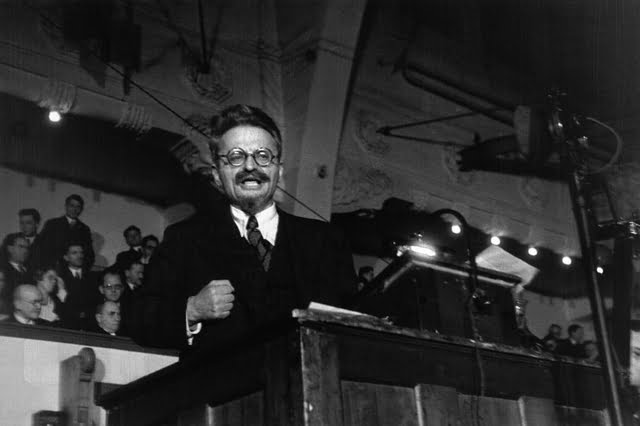 The modern state is a bureaucratic monster that devours a colossal amount of the wealth produced by the working class. Marxists agree with the anarchists that the state is a monstrous instrument of oppression that must be eliminated. The question is: How? By whom? And what will replace it? This is a fundamental question for any revolution.
The modern state is a bureaucratic monster that devours a colossal amount of the wealth produced by the working class. Marxists agree with the anarchists that the state is a monstrous instrument of oppression that must be eliminated. The question is: How? By whom? And what will replace it? This is a fundamental question for any revolution.
In a speech on anarchism during the Civil War that followed the Russian Revolution, Trotsky summarized very well the Marxist position on the state:
“The bourgeoisie says: don’t touch the state power; it is the sacred hereditary privilege of the educated classes. But the Anarchists say: don’t touch it; it is an infernal invention, a diabolical device, don’t have anything to do with it. The bourgeoisie says, don’t touch it, it’s sacred. The Anarchists say: don’t touch it, because it’s sinful. Both say: don’t touch it. But we say: don’t just touch it, take it in your hands, and set it to work in your own interests, for the abolition of private ownership and the emancipation of the working class.” (Leon Trotsky, How The Revolution Armed, Vol. 1, 1918. London: New Park, 1979)
Generalising from the experience of the Paris Commune Marx explained that the working class cannot simply base itself on the existing state power, but must overthrow and destroy it. The basic position was outlined in State and Revolution, where Lenin writes: “Marx’s idea is that the working class must break up, smash the ‘ready-made state machinery,’ and not confine itself merely to laying hold of it.”
Against the confused ideas of the anarchists, Marx argued that the workers need a state to overcome the resistance of the exploiting classes. But that argument of Marx has been distorted by both the bourgeois and the anarchists. The working class must destroy the existing (bourgeois) state. On this question we agree with the anarchists. But what then? In order to bring about the socialist reconstruction of society, a new power is required. Whether you call it a state or a commune is a matter of indifference. The working class must organize itself and therefore constitute itself as the leading power in society.
The working class needs its own state, but it will be a state completely unlike any other state ever seen in history. A state that represents the vast majority of society does not need a huge standing army or police force. In fact, it will not be a state at all, but a semi-state, like the Paris Commune. Far from being a bureaucratic totalitarian monster, it will be far more democratic than even the most democratic bourgeois republic – certainly far more democratic than Sweden is today.
Commenting on Lenin’s State and Revolution in his book The Revolution Betrayed, Trotsky wrote:
“This same bold view of the state in a proletarian dictatorship found finished expression a year and a half after the conquest of power in the program of the Bolshevik party, including its section on the army. A strong state, but without mandarins; armed power, but without the Samurai! It is not the tasks of defense which create a military and state bureaucracy, but the class structure of society carried over into the organization of defense. The army is only a copy of the social relations. The struggle against foreign danger necessitates, of course, in the workers’ state as in others, a specialized military technical organization, but in no case a privileged officer caste. The party program demands a replacement of the standing army by an armed people.
“The regime of proletarian dictatorship from its very beginning thus ceases to be a ‘state’ in the old sense of the word – a special apparatus, that is, for holding in subjection the majority of the people. The material power, together with the weapons, goes over directly and immediately into the hands of the workers’ organizations such as the soviets. The state as a bureaucratic apparatus begins to die away the first day of the proletarian dictatorship.” (The Revolution Betrayed, Chapter 3, Socialism and the State)
The Russian Revolution
 For Marxists, the October Revolution of 1917 represents the most important event in human history. For the first time ever, with the exception of the brief but heroic episode of the Paris Commune, the working class laid hold of the reins of state power, threw aside capitalist property relations, and began the process of socialist transformation. The revolution represented a huge victory for the working class, as the factories passed into their hands; for the peasants, as the land passed into theirs; for women, who saw full legal equality for the first time in Russia; for national and ethnic minorities, particularly Jews, who had suffered greatly under Great Russian chauvinism of the autocratic tsarist regime.
For Marxists, the October Revolution of 1917 represents the most important event in human history. For the first time ever, with the exception of the brief but heroic episode of the Paris Commune, the working class laid hold of the reins of state power, threw aside capitalist property relations, and began the process of socialist transformation. The revolution represented a huge victory for the working class, as the factories passed into their hands; for the peasants, as the land passed into theirs; for women, who saw full legal equality for the first time in Russia; for national and ethnic minorities, particularly Jews, who had suffered greatly under Great Russian chauvinism of the autocratic tsarist regime.
The workers’ state established by the Bolshevik Revolution in 1917 was neither bureaucratic nor totalitarian. On the contrary, before the Stalinist bureaucracy usurped control from the masses, it was the most democratic state that ever existed. The basic principles of the Soviet power were not invented by Marx or Lenin. They were based on the concrete experience of the Paris Commune, and later elaborated upon by Lenin.
The Soviets of Workers’ and Soldiers’ Deputies were elected assemblies composed not of professional politicians and bureaucrats, but of ordinary workers, peasants and soldiers. It was not an alien power standing over society, but a power based on the direct initiative of the people from below. Its laws were not like the laws enacted by a capitalist state power. It was an entirely different kind of power from the one that generally exists in the parliamentary bourgeois-democratic republics of the type still prevailing in the advanced countries of Europe and America.
Engels long ago explained that in any society in which art, science and government is the monopoly of a minority, that minority will use and abuse its position in its own interests. Lenin was quick to see the danger of the bureaucratic degeneration of the Revolution in conditions of general backwardness.
Lenin was the sworn enemy of bureaucracy. He always emphasised that the proletariat needs only a state that is “so constituted that it will at once begin to die away and cannot help dying away.” A genuine workers’ state has nothing in common with the bureaucratic monster that exists today, and even less the one that existed in Stalinist Russia. The basic conditions for workers’ democracy were set forth in State and Revolution:
- Free and democratic elections with the right of recall of all officials.
- No official to receive a higher wage than a skilled worker.
- No standing army or police force, but the armed people.
- Gradually, all the administrative tasks to be done in turn by all. “Every cook should be able to be Prime Minister—When everyone is a ‘bureaucrat’ in turn, nobody can be a bureaucrat.”
These were the conditions which Lenin laid down, not for full-fledged socialism or communism, but for the very first period of a workers’ state—the period of the transition from capitalism to socialism. This programme of workers’ democracy is directly aimed against the danger of bureaucracy. This in turn formed the basis of the 1919 Party Programme.
The transition to socialism – a higher form of society based on genuine democracy and plenty for all – can only be accomplished by the active and conscious participation of the working class in the running of society, of industry, and of the state. It is not something that is kindly handed down to the workers by kind-hearted capitalists or bureaucratic mandarins. The whole conception of Marx, Engels, Lenin, and Trotsky was based upon this fact. Anybody can see that this programme is completely democratic and the very antithesis of bureaucratic dictatorship. Socialism as understood by Marxists is democratic or it is nothing.
Marx explained long ago that in any society where want is general, “all the old crap revives.” It was these conditions that gave rise to Bureaucracy – a thick layer of officials and careerists who elbowed the workers to one side and grabbed privileged positions in the State and in industry. Lenin warned repeatedly against the dangers of Bureaucracy – not only in the State but in the Party itself.
The real reason for the bureaucratic degeneration of the Russian Revolution was not some “original sin” of Bolshevism, but the isolation of the Revolution in conditions of material and cultural backwardness. This, in turn, was the result of the betrayal of the leaders of European Social Democracy. But to deal with this in detail wold carry us far beyond the limits of the present polemic.
Under conditions of frightful backwardness, the Russian revolution suffered a process of bureaucratic degeneration. The Stalinist counter-revolution destroyed the democratic regime established by Lenin and Trotsky in 1917. Contrary to the myth assiduously spread by the bourgeois reactionaries and also the anarchists, Stalinism and Bolshevism are two mutually incompatible phenomena. The proof of this was the fact that Stalin, in order to consolidate his bureaucratic and totalitarian regime, had to physically exterminate all the leaders of Lenin’s Party.
What failed in the Soviet Union was not socialism or communism in any sense that would be recognised by Marx, Lenin or Trotsky, but a bureaucratic and totalitarian caricature of socialism. This certainly failed, and was bound to fail. The demise of the Soviet Union was predicted as early as 1936 by Trotsky in his book The Revolution Betrayed. He pointed out that the Stalinist bureaucracy would not be satisfied with their bloated salaries and privileges, but would inevitably take the road to capitalist restoration. That is precisely what occurred.
Anarchism today
 Anarchists imagine that they are more revolutionary because they call for a social revolution here and now. But dialectically, in their impatience to carry out a social revolution when the conditions for it are absent, they actually find themselves reduced to impotent “direct actions” of small minorities isolated from the mass of the working class that lead nowhere, combined with the advocacy of “small deeds” on a local level and pseudo-revolutionary tokenism.
Anarchists imagine that they are more revolutionary because they call for a social revolution here and now. But dialectically, in their impatience to carry out a social revolution when the conditions for it are absent, they actually find themselves reduced to impotent “direct actions” of small minorities isolated from the mass of the working class that lead nowhere, combined with the advocacy of “small deeds” on a local level and pseudo-revolutionary tokenism.
Under the influence of bourgeois post-modernism, they are obsessed with language, trying to make sure they all speak “with no trace of oppression or hierarchy” in their language. Thus, “social revolution” is reduced to empty tokenism and terminological radicalism. By abolishing hierarchy in language they imagine that they have abolished it in fact, while the real world passes them by without even noticing this remarkable “revolution” and hierarchy, exploitation and oppression carry on quite happily, just as before.
For anybody like myself who has a sincere respect and admiration for the old anarchist workers like the old CNT worker militants who were genuine revolutionaries, betrayed by their anarchist leaders, modern day anarchism presents a truly depressing spectacle. The old anarchist workers may have been mistaken in some of their ideas, but they were revolutionaries and class fighters to the very core of their being. What we have today is only a caricature of the genuine item, a thing without any real substance, with no roots in the workers’ movement, no clear ideas, no notion of tactics or strategy, whose only role is to spread confusion in the minds of a layer of radicalised youth that is trying to find the revolutionary road. Anarchism is not the road to revolution but only a blind alley.
In the absence of a strong revolutionary party, a layer of young people who wish to change society, initially fall under the influence of anarchist ideas. Most of them soon come to understand the limitations of anarchist ideas and tactics. For them, anarchism is a kind of preparatory school that will eventually lead to Marxism. We Marxists hold out our hand in friendship to those young people. We will fight together with them against the common enemy. But we will also explain patiently the difference between anarchism and Marxism and polemicize against incorrect ideas and tactics that cannot lead the workers and youth to a victorious socialist revolution.
With regret, we must end this interesting encounter with anarchism by quoting the words of the old Bakunin: “Whoever wants not freedom, but the state, should not play Revolution”. But that is precisely what anarchism signifies. Anyone who wishes seriously to carry out revolutionary work must pass beyond the limitations and confusions of anarchism and adopt the only consistent revolutionary standpoint – the standpoint of Marxism.
We are firmly convinced that there are many young people who consider themselves to be anarchists who have a serious attitude towards revolution and wish to learn. But revolution is both a science and an art that must be studied with the same painstaking attention that the officers in a bourgeois army study the history of war in order to develop tactics and strategy.
We Marxists are striving for the creation of an international army of the proletariat. The International Marxist Tendency is continuing the great revolutionary traditions of Marx, Engels, Lenin and Trotsky. Our programme is the program of the Bolshevik Revolution and of the Communist International.
We also lay claim to that great Spanish revolutionary and martyr of the working class, Buenaventura Durruti who represented the best element in anarchism – that element that stood close to Bolshevism and in effect was indistinguishable from it. We call upon all serious anarchists who wish to fight for world socialism to join with us, debate and discuss with us, and finally to fuse together in one powerful proletarian revolutionary tendency on a world scale.
The only road to revolution is the road that leads to the building of a revolutionary workers’ organization, a Marxist party and an International. That is what is offered to the workers and youth of Brazil by the International Marxist Tendency.

